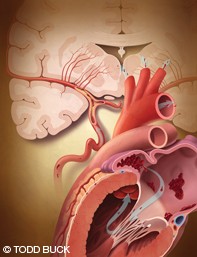Peer Reviewed
Feature Article Cardiovascular medicine
How to investigate patients following a transient ischaemic attack
Abstract
Urgent and comprehensive investigation, with expert opinion and management, reduces the high early risk of stroke following a TIA. CT scans, 12-lead ECGs and carotid imaging are the essential investigations in the first hours after a suspected TIA.
Key Points
- Urgent and comprehensive investigation of patients can reduce the high early risk of stroke following a TIA.
- All patients with stroke-like neurological symptoms should present to hospital urgently, including those with a TIA in whom symptoms and signs have resolved or are resolving.
- The aims of investigations are initially to exclude haemorrhage and then to determine the possible sources of thromboembolism and the presence of treatable cardiovascular risk factors.
- CT scans, 12-lead ECGs and carotid imaging are essential investigations in the first hours after a suspected TIA.
- Blood testing, echocardiography, MRI and Holter or bedside cardiac monitoring are likely to improve diagnosis and better inform treatment.
- About a quarter of patients with stroke-like symptoms will have a non-neurovascular mimic disorder requiring different investigations and management.
Purchase the PDF version of this article
Already a subscriber? Login here.

